
Lavacrum oceanum vel labrum
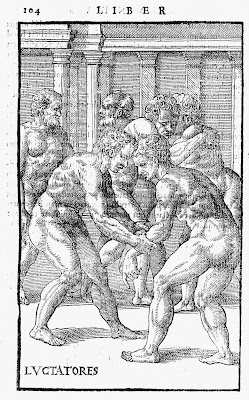
Luctatores

Pancratium volutatorium

Caestus

Caestus
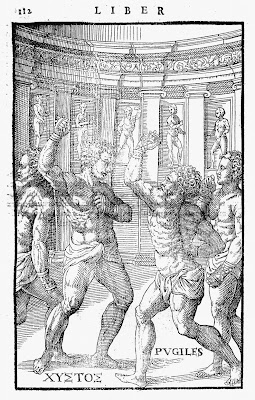
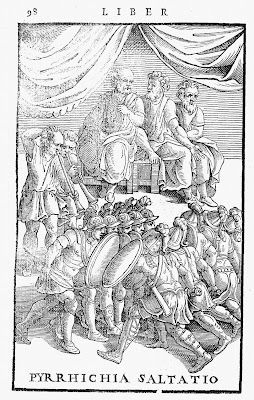
Pyrrhichia saltatio

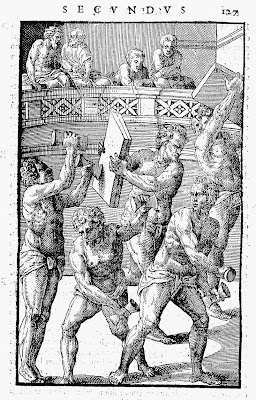
Halteris
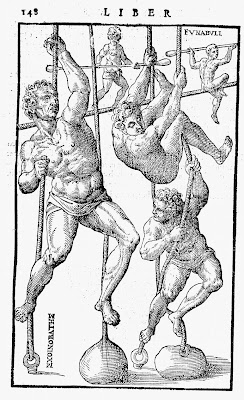



Pilae ludum


Pilae ludum

De spiritus cohibitione

Oscellae vel petaurum


Accubitus

Marmoreum triclinium vetustissimum
Italian doctor Girolamo Mercuriali (Hieronymus Mercurialis) (1530-1606) was received favourably by the Papal court of Paul IV when he was sent to Rome on a political mission. He remained in the city for 7 years during which time he was privileged with unfettered access to the great libraries where he studied classical greek and roman health-related literature.
His best remembered work (among a number of important medical treatises) is 'De Arte Gymnastica' which was first published in 1569. It is considered a prime creative example of the humanist renaissance use of surviving accounts of the ancient world. Mercuriali drew upon the writings of Galen, Hippocrates, Plato and others in compiling the first complete work on the health benefits of gymnastics and various forms of physical exercise.
The woodcut illustrations by Cristofero Coriolano from designs by Pirro Ligorio were not introduced into the 6-volume series until the 2nd edition in 1573. They are perhaps more reliant upon imagination than archaeological evidence but nevertheless helped to popularise the work in Europe.
Mercuriali discusses the restorative value to a person's health of diet, hygeine and exercise, with forays into the effects of different forms of transport, examples of genteel female exercises, descriptions of the ancient bath houses and gymnasia and concludes with a section on recommended therapeutic exercises - aimed at the elite males of course. There is some basis to regard this book as a founding publication in sports medicine, circus techniques and physicial therapy.
- The microfilm scans above from 'De Arte Gymnastica' come from the University of Seville (just the illustrations) - they also have the complete book available. [There are occasional poor quality book scans of some of the illustrations at other sites but I didn't find anything better than the photocopy-esque images here]
- The engraving below (spliced and doctored) comes from another edition of the book, published a century after the original - from a small exhibition site at Ebling Library, University of Wisconsin-Madison. Their Browsing Corner site is well worth checking out - short illustrated reviews of their rare book holdings - it was what prompted this post. I think I signed up a while ago for their occasional email notifications, but I don't recall having received anything so far.
- I'm not sure I know what the book 'Paradigm 21' is, but the chapter called 'Roots' seems to be a reasonable account of the history of physical culture.
- Bookshop description of 'De Arte Gymnastica'.
- Any other information above was gleaned from very short mentions in a number of sites not particularly worth linking. There is not much around.

Naval battle in the Verona Coliseum.




No comments:
Post a Comment